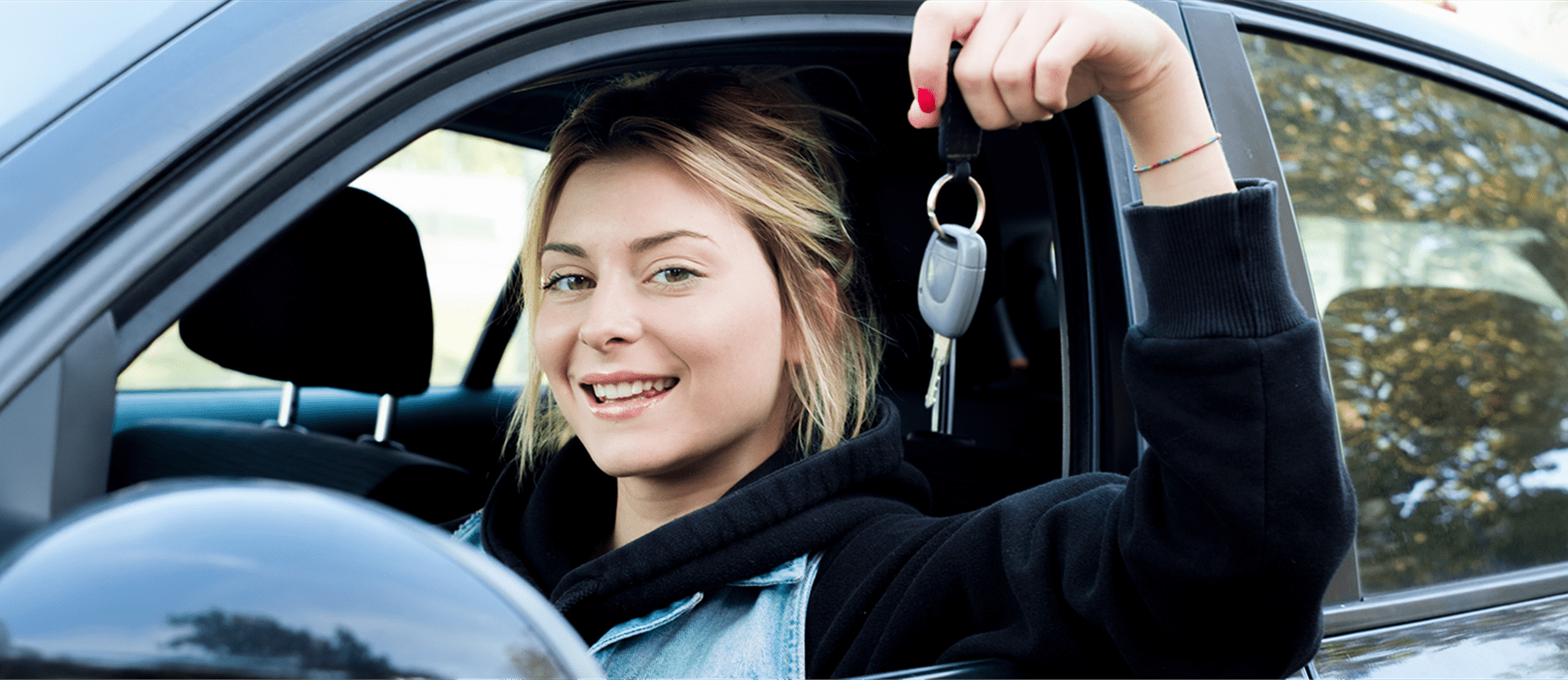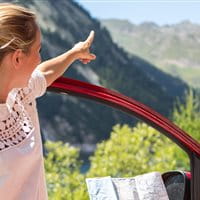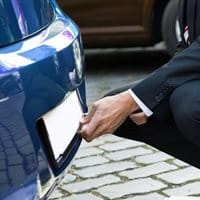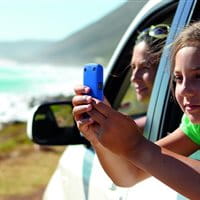- Step by step to your driver's license
- You should expect these costs
- How to save money
- Driving with an "L" plate – requirements for learner drivers and accompanying persons
- Choose the ideal practice route
- Before setting off: Final preparations
- Well insured for that first journey behind the wheel
- Are you ready for your first practice drive? Test your knowledge.
Step by step to your driver's license
Getting your driver's license is an exciting adventure that is much less stressful with the right preparation. These five steps will take you safely and directly to your destination:
Step 1: Apply for a learner's permit
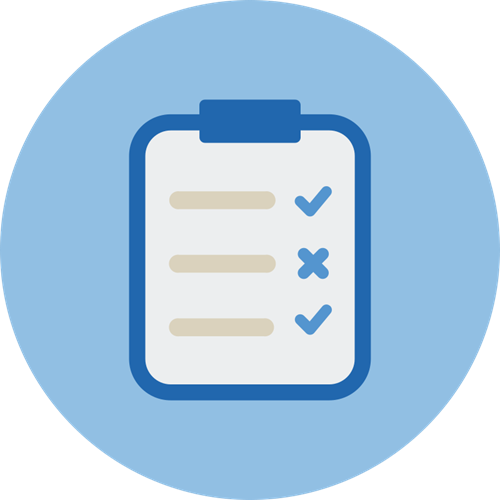
In Switzerland, you can submit an application for a learner's permit one to two months before your 17th birthday. Here's what's required:
- Complete an emergency assistance course: The course certificate is required in order to apply for a learner's permit.
- Have your eyes tested: A recent eye test by a recognized specialist is also mandatory.
- Get an up-to-date passport photo: An up-to-date passport photo must be enclosed with the learner's permit application.
- Submit an application: The application form is available on the website of the relevant cantonal road traffic office.
Tip: The process of applying for a learner's permit is explained in compact form on fuehrerausweis.ch – including requirements, legal stipulations and the contact details of the cantonal road traffic offices.
Step 2: Take the theory test

Now it's time to learn! As soon as a learner's permit application has been submitted, preparation for the theory test begins. It helps to:
- Learn the basics: Acquire the necessary knowledge about traffic rules and traffic situations.
- Practice theory questions: Learning apps such as iTheorie or the BLINK theory app help with practicing.
- Know the technology: From July 1, 2025, knowledge of driver assistance systems will also be part of the theory and practical driving test. www.smartrider.ch
If you feel confident, register for the theory test. After passing the test, the learner driver's license is issued – this allows learner drivers to get behind the wheel with an accompanying person!
Worth knowing: From 2025, the electronic learner driver's license will gradually replace the paper license in all cantons.
Step 3: Gain driving experience
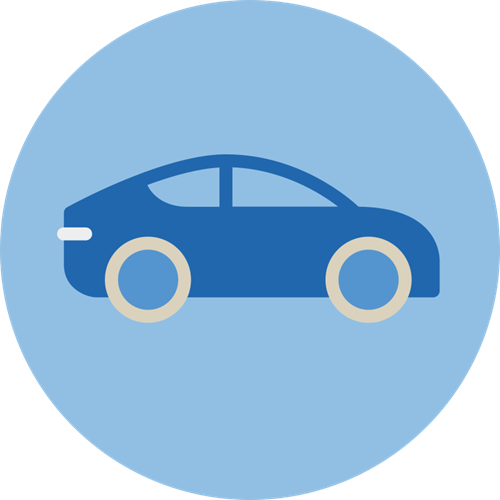
Practice makes perfect – and that's what this step is all about:
- Take driving lessons: A driving school with experienced driving instructors and a structured training program is the ideal support for the first few miles behind the wheel. On average, 30 driving lessons are completed before the practical test.
- Attend road safety lessons (VKU): VKU road safety lessons are mandatory and provide important background knowledge.
- Practice in your spare time: Practice drives with an accompanying person help to consolidate what you have learned in driving school – but be sure to check the insurance conditions of the vehicle used beforehand (more on this in the section "Well insured for the first time behind the wheel").
Important: In order to build up safety and experience, it is advisable to practice in as many different traffic situations as possible – such as driving on the highway, at night or in heavy city traffic.
Step 4: Take the driving test
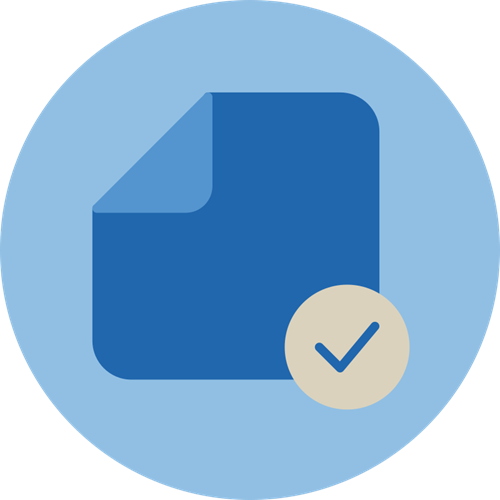
A safe driver? Then the big moment is just around the corner:
- Register for a driving test: The test date is arranged directly with the road traffic office.
- Pass your test: With good preparation and plenty of driving experience, nervousness can be significantly reduced.
You did it! Those who pass their practical test receive a probationary driver's license and are now allowed to drive alone – a huge milestone on the road to independence.
Step 5: Apply for a permanent driver's license

Then it's time for the final sprint:
- Complete the advanced training course: The advanced training course for new drivers must be completed within three years.
- Apply for a permanent driver's license: After successful completion of the advanced training course and expiry of the three-year probationary period, the actual driver's license is issued.
Driver's license in your pocket – a real moment of success! This marks the start of a new period of freedom and independence.
You should expect these costs
Learning to drive is not cheap. The costs vary depending on the canton and provider. The following overview shows the most important components and a guide value for the costs.
| Cost | |
| Emergency assistance course & eye test | CHF 150 |
| Apps & various tools | CHF 50 |
| Theory test & learner's license | CHF 100 |
| Driving lessons (30 lessons lasting 50 minutes each) | CHF 2’700 |
| Road safety lessons (VKU) | CHF 200 |
| Practical driving test & probationary driver's license | CHF 150 |
| Advanced training course | CHF 350 |
| Permanent driver's license | CHF 20 |
| Total cost | CHF 3’720 |
How to save money
- The number of driving lessons with an instructor can be reduced with the help of private practice drives with an experienced accompanying person.
- Many driving schools offer discounts when booking driving lesson packages.
- Free or inexpensive apps and online courses help you prepare for the theory test.
Driving with an "L" plate – requirements for learner drivers and accompanying persons
Before hitting the road together for the first time, learner drivers and accompanying persons must observe the following rules, among others:
Learner driver
- Minimum age: 17 years
- Valid category B learner's license
- 0.0 per mille alcohol limit
Accompanying person
- Minimum age: 23 years
- In possession of a permanent category B driver's license for at least three years
- 0.0 per mille alcohol limit
- Must sit in the passenger seat while driving (exceptions: practice areas, reversing or parking)
- May only accompany one person outside their own family on practice drives per year
Vehicle
- Must be registered and have compulsory liability insurance
- The handbrake must be accessible and operable for the accompanying person at all times
- While driving, a white "L" on a blue background must be clearly visible at the rear of the vehicle
Route selection
- Practice drives are only permitted within Switzerland.
- Major roads and highways may only be driven on when the learner is ready for the test.
Tips
The legal requirements may change – accompanying persons should therefore find out about the current regulations from the relevant authorities in good time.
Choose the ideal practice route
It's never easy starting out, but with the right route, it's a little less difficult. Simple and clear routes help to build up confidence at the wheel and practice new driving maneuvers without any stress. After the first few miles, the difficulty can be gradually increased in line with progress.
- Quiet starting conditions: On roads with little traffic, the learner can get used to the vehicle and its basic functions in peace.
- Increase in requirements: As soon as the learner is more confident, more challenging situations can be gradually introduced, such as cross-country trips, traffic circles, simple city drives or slight inclines and declines.
- Practice specific traffic situations: Plan specific journeys to train certain skills, such as parking, reversing, changing lanes, getting into lane before intersections and behavior on main roads.
- Highways only when ready for the test: Learners may only drive on major roads and highways once the date for the practical driving test has been confirmed.
- Preparation is everything: By discussing the planned route and learning objectives in advance, learners know what to look out for and can concentrate better.
Tips: Choose routes that the accompanying person knows well and use map services to find large car parks nearby for practicing.
Before setting off: Final preparations
A quick check before you start – to be on the safe side. This way, the drive will pass smoothly, and you'll not forget anything important.
Insurance and documents
- Is your learner driver's license packed?
- Does the accompanying person have an unlimited category B driver's license with them?
- Do both have their identity card or passport on board?
- Is the vehicle registration document to hand?
Car
- Is the "L" plate mounted correctly at the rear?
- Do all the lights work?
- Is the tire tread at least 1.6 mm?
- Are the windshield wipers and the windshield wiper system functional?
- Is there enough fuel in the tank?
- Are the seat position and mirrors correctly adjusted?
Then you're ready to go: Have a good trip!
Well insured for that first journey behind the wheel
Before going on a practice drive with an accompanying person, it is advisable to clarify the insurance coverage of the vehicle used. Third party motor vehicle insurance is compulsory in Switzerland and covers damage to third parties – including for learner drivers. However, the deductible may be higher for novice drivers and young drivers up to the age of 25.
- Comprehensive insurance or partial cascos: In addition to the legally required liability insurance, accidental damage insurance is recommended. Whether hail, theft or stone chips – partial casco (single vehicle accidental damage insurance) covers you if something unexpected happens. Comprehensive insurance also covers collision damage to your own car – whether caused by a collision with another vehicle or an obstacle such as a fence or garage door.
- Third party driver insurance: This supplementary insurance in the personal liability insurance of the accompanying person covers damage to the third party (private) motor vehicle used during practice drives. As a rule, insurance coverage is provided if the responsible accompanying person and the vehicle owner do not live in the same household.
- Legal protection: Provides legal support in the event of disputes or accidents.
Please note: For young drivers under the age of 25, special conditions often apply to third party liability and comprehensive insurance – such as a higher deductible or a so-called young driver surcharge.
Tip
Don't have your own car? With a sharing service or a car subscription, you can practice cheaply – often including insurance.
Are you ready for your first practice drive? Test your knowledge.
What is the minimum age a learner driver must be to apply for a category B learner's license?
- 17 years
For how many years must the accompanying person have held a permanent category B driver's license?
- 3 years
Can a learner driver drive on major roads and highways?
- Yes, but only if they are ready for the test and have a definite test date
What is the blood alcohol limit for learner drivers and accompanying persons during practice drives?
- 0.0 per mille
How must the vehicle be labeled during the practice drive?
- With a white "L" on a blue background
How many people outside the family may an accompanying person accompany on practice drives per year?
- One person
What insurance is compulsory in Switzerland to cover damage to third parties?
- Motor vehicle liability insurance
AccorWhich insurance module is recommended if the vehicle used for practice belongs to a person outside your own household?deon Title
- Third party driver insurance
